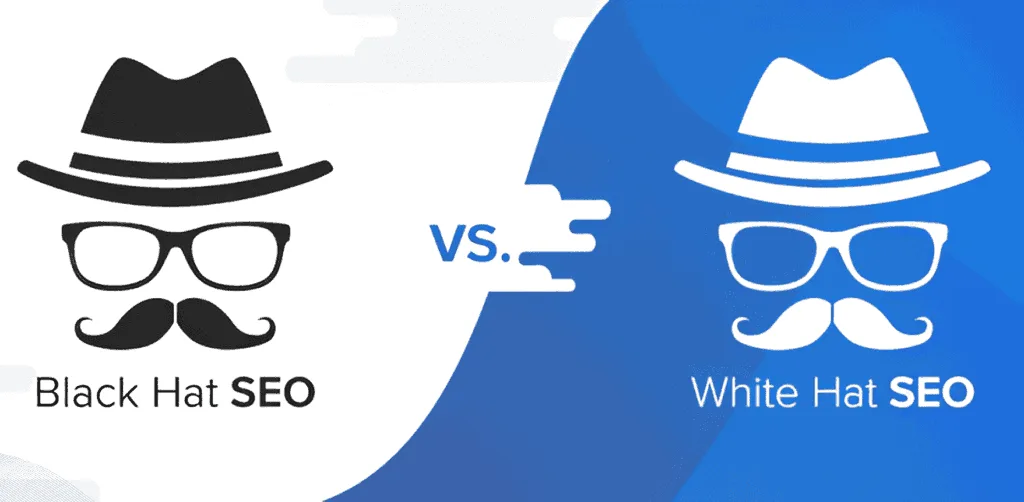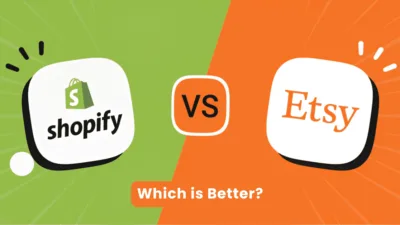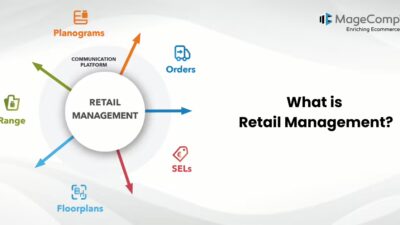According to 72% of digital marketing experts, SEO is the most important digital marketing strategy. These marketing experts are even right about their thesis: 68% of online encounters start with a search on search engines like Google and Bing, and 94% of searches worldwide are done on Google.
Due to this fact, we indirectly discuss Google and its algorithms when we discuss search engines. However, marketers can use multiple strategies to rank webpages and websites in search engines, but Google has never mentioned any of them specifically.
According to Google’s new algorithms, websites must have content written for users and optimized for search engine bots. This is the real meaning of SEO.
Regarding SEO, there are two fundamental techniques to consider based on search engine algorithms and guidelines.
The first approach is White Hat SEO, which follows Google’s guidelines and recommendations. While this method may take some time to rank your pages, the resulting rankings tend to be longer-lasting.
The second technique is Black Hat SEO, which uses tactics that Google does not endorse. These techniques are designed to manipulate the search engine to achieve quick website rankings.
White Hat SEO
The main goal of SEO optimization is to improve your website’s ranking on Google. This also applies to using white hat techniques.
Google’s search algorithm considers five essential factors when determining which page should rank at the top for a specific query. These factors are as follows:
- Search query intent
- Webpage relevancy
- Webpage usability
- Webpage content quality
- Settings and context
Best White Hat SEO Practices
As discussed above, Google recommends white hat SEO practices, significantly improving a website’s SEO.
1. Mobile-first approach
In March 2015, Google announced a mobile update called ‘mobilgeddon’. This was followed by the rollout of indexing based on a mobile-first design in 2017.
Google recognized the increasing importance of mobile devices and anticipated many searches would be conducted on mobile phones.
Around 64% of Google searches are performed on mobile devices. Therefore, websites and webpages must be optimized for mobile usability.
Also Read – Google Core Update 2024
2. Google My Business Profile
Google Business Profile, previously known as Google My Business, is a powerful and free tool offered by Google that enables businesses to create a comprehensive listing.
This listing ensures that essential information about the business, such as its location, contact details, website, and operating hours, is readily available to potential customers on Google Search, Google Maps, and Google Images.
By creating a Business Profile, businesses with physical locations can significantly improve their online visibility and make it easier for customers to find and engage with them.
Also Read – What is Google My Business? Your Ultimate Business Guide
3. Page Experience
Google’s Page Experience update emphasizes creating user-friendly websites. Factors like loading speed, mobile friendliness, and secure browsing (HTTPS) now play a crucial role in rankings. Websites should focus on delivering a smooth, fast experience across devices.
Optimizing for Core Web Vitals—such as Largest Contentful Paint (LCP), First Input Delay (FID), and Cumulative Layout Shift (CLS)—helps enhance page experience, making it more enjoyable for users, which is rewarded by search engines.
4. The USER Experience
User experience (UX) is central to SEO success. Search engines prioritize websites that provide valuable, easy-to-navigate content.
A well-structured website with intuitive navigation, engaging design, and clear call-to-actions (CTAs) keeps users on the page longer, reducing bounce rates. UX encompasses everything from visual appeal to accessibility, ensuring the website meets the needs and expectations of the audience.
A positive user experience leads to better engagement metrics, improving SEO performance.
5. Keyword Research
Keyword research remains fundamental to SEO. It involves identifying potential customers by searching for words and phrases and creating content that meets their needs.
Effective keyword research includes analyzing search volume, user intent, competition, and long-tail keywords that are more specific and targeted. Tools like Google Keyword Planner, SEMrush, and Ahrefs help find the right keywords.
Also Read – Top Keyword Research Tools
Proper keyword placement in titles, meta descriptions, headers, and content ensures search engines understand the relevance of your pages.
6. Content Marketing
High-quality content is essential for white-hat SEO. Search engines favor websites that consistently publishing valuable, informative, and well-optimized content.
Content marketing involves creating blog posts, infographics, videos, and other forms of content that answer users’ queries and solve their problems.
Focus on relevance, readability, and originality while adhering to SEO best practices like keyword placement and meta tags. Engaging content that resonates with your audience increases shareability and organic traffic.
7. On-Page Optimization
On-page SEO refers to optimizing individual web pages to rank higher and earn more relevant traffic in search engines. It involves optimizing elements such as meta titles, meta descriptions, headers, image alt texts, and URLs.
Critical aspects are ensuring content is well-structured using heading tags (H1, H2, H3), creating keyword-rich but natural-sounding titles, and optimizing images for speed and alt-text for accessibility.
On-page optimization helps search engines understand your content and enhances the user experience.
8. Link Building
Link building is a critical aspect of white hat SEO. It focuses on obtaining high-quality, relevant backlinks from authoritative websites, which act as votes of confidence for your site’s credibility.
The goal is to earn these links naturally by creating valuable content that other websites will want to reference. Tactics such as guest blogging, reaching out to influencers, and leveraging content marketing for linkable assets (such as infographics and case studies) are effective.
Search engines use backlinks as a ranking signal, so ethical link-building helps improve your site’s authority and rankings.
Advantages of White Hat SEO
1. Cost-Effective
White hat SEO is a long-term investment that reduces the need for paid ads. By focusing on quality content and user experience, businesses gain sustainable organic traffic, leading to high returns over time without additional costs for damage control.
2. Brand Image
Ethical SEO practices enhance a brand’s image by delivering valuable content and a positive user experience. This fosters trust, improves customer perception, and strengthens the brand’s online reputation, differentiating it from competitors.
3. Low Risk
White hat SEO complies with search engine guidelines, minimizing the risk of penalties or bans. This approach ensures steady growth and avoids the disruptions caused by black hat tactics, which can lead to severe penalties.
4. More Leads, More Revenue
Ethical SEO attracts higher-quality organic traffic, increasing the likelihood of conversions. By optimizing for relevant keywords, businesses gain more leads and, in turn, more revenue, without relying on paid advertising.
5. Longer Stability
White hat SEO offers lasting stability in search engine rankings. Since it aligns with search engine algorithms, websites using white hat practices are less affected by algorithm changes, maintaining consistent visibility over time.
Black Hat SEO
Unlike white-hat SEO techniques, black-hat SEO techniques are not recommended by Google. White-hat SEO is the ethical approach experts and search engines like Google recommend.
On the other hand, black hat techniques are unethical practices that aim to deceive search engines and manipulate their algorithms to boost a website’s ranking artificially.
These black hat techniques exploit weaknesses in search algorithms to make a website appear more valuable or relevant than it is. However, it’s crucial to note that Google is constantly refining its algorithms to prioritize the best user experience.
As a result, websites employing black hat SEO tactics are at risk of being penalized by Google.
With each algorithm update, websites that have relied on black hat SEO to achieve high rankings often see their positions plummet due to Google’s efforts to combat such manipulative practices.
Black Hat SEO Practices
1. Cloaking
Cloaking is a deceptive method in which different content is shown to search engine crawlers and users.
For example, a website might show keyword-rich content to Google to boost its ranking but present users with a different page, such as irrelevant sales pages. This misleads the search engine and the visitor, creating a poor user experience.
2. Doorway Pages
Doorway or gateway pages are low-quality pages created solely to rank high for specific search queries.
These pages act as funnels, redirecting users to different, often irrelevant, pages once they click on them. They typically contain little meaningful content and are stuffed with keywords to deceive search engine algorithms, ultimately offering no real value to visitors.
3. Private Blog Networks (PBN)
A PBN is a collection of websites created solely to build backlinks to the main site, which can help boost its ranking. These networks often consist of expired domains that still have some authority in the eyes of search engines.
The owner uses the PBN to generate artificial link juice, but search engines are increasingly sophisticated in identifying and penalizing such tactics.
4. Hidden Text and Links
This involves hiding keywords or links in a website’s content, making them invisible to users but detectable by search engines. Standard methods include using white text on a white background or placing text behind images.
The aim is to manipulate the ranking algorithm without benefitting the user, which violates SEO best practices.
5. Duplicate Content
Duplicate content refers to copying content from other sites or even duplicating your content across multiple pages. This can confuse search engines, which may need to know which version to rank higher, and may even lead to all versions being down-ranked.
While some duplicate content may occur unintentionally, using it as a strategy is frowned upon and can harm a website’s credibility.
6. Clickbait
Clickbait uses sensational, misleading, or exaggerated headlines to entice users to click on a link. When users visit the page, they find content that doesn’t match the promise. While this might temporarily boost traffic, it leads to high bounce rates and user dissatisfaction.
Search engines like Google measure user engagement, and consistently delivering poor content after a clickbait headline can result in penalties.
Advantages of Black Hat SEO
Black hat SEO refers to unethical or manipulative techniques to improve search engine rankings. Though these methods can produce quick results, they carry significant risks, such as penalties or bans from search engines.
1. Rapid Results
Black hat SEO techniques often deliver fast results in terms of increased website traffic and higher rankings.
Tactics like keyword stuffing, cloaking, and buying backlinks manipulate search engine algorithms to push a website to the top of search results quickly. For businesses or individuals seeking immediate visibility, these methods can generate an instant surge in traffic and potentially more conversions, albeit in the short term.
The rapid rise can particularly appeal to those in competitive industries where organic SEO may take longer to show results.
2. Affordable Solution
Compared to the time and resource-intensive nature of white-hat SEO, black-hat SEO is often seen as a more cost-effective solution in the short term.
By avoiding the lengthy process of building high-quality content and legitimate backlinks, businesses can save time and money on content creation, outreach, and compliance.
Instead, they invest in shortcuts, such as using automated tools to generate backlinks or stuffing their content with keywords, which can provide the illusion of effectiveness without the high costs.
3. Competitive Edge
Black hat SEO can provide a temporary competitive advantage, especially in markets where competitors also engage in similar practices. These aggressive tactics help a website rank above competitors for targeted keywords, driving traffic and potential sales.
In sectors where speed and immediate visibility are crucial, such as product launches or limited-time offers, black hat techniques may appear advantageous.
However, this edge is usually short-lived, as search engines frequently update their algorithms to detect and penalize such practices.
Ending Note
Adhere to Google’s recommended practices for improving your website’s ranking on the search engine results pages (SERPs) to avoid being penalized.
Regularly monitor your search console for Google notifications regarding any potentially harmful activity on your site. Pay close attention to Google’s backlinks report and submit disavow requests for any links from non-authoritative websites.
Understanding the implications of white hat SEO and black hat SEO can provide valuable insights into how these practices may affect your website. To optimize your website for SEO, hire our SEO experts and get your website ranked in the SERPs.








